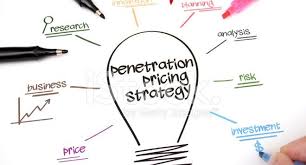Penetration pricing is a strategic pricing approach where businesses set an initially low price to attract customers and gain market share quickly. While it can be an effective method for growing your customer base, it’s important to understand when and how to use penetration pricing in your business. This blog post will explore the scenarios where penetration pricing can be the right choice and how to execute it successfully.
1. When Launching a New Product or Service
One of the most common scenarios for using penetration pricing is when you are launching a new product or service. In competitive markets, customers may be hesitant to try new brands, especially if they don’t have a prior relationship with your business. By offering a low price, you can overcome this initial resistance and entice customers to give your product a try. Once you’ve built a customer base and gained some recognition, you can then increase the price gradually, while retaining loyal customers who have already experienced the value of your offering.
2. When Entering a Competitive Market
Penetration pricing is particularly effective when entering a crowded market with established competitors. Setting a lower price can help your brand stand out and attract customers who are looking for a better deal. This approach forces competitors to respond, which could lead to increased visibility for your brand. If your product offers unique features or superior quality, penetration pricing can be a way to capture attention and differentiate your business without needing to compete solely on the price.
Read Also: Penetration Pricing Strategy
3. When You Have the Financial Backing to Absorb Initial Losses
While penetration pricing can bring significant benefits in terms of market share, it also involves offering products at a lower price than the cost to produce them, at least initially. This can result in losses or lower profit margins for the business. For this reason, penetration pricing is best suited for companies that have the financial resources to absorb these losses while building a customer base. Once your product gains traction and you start seeing consistent sales volume, you can adjust your pricing strategy to reflect more sustainable profit margins.
4. When You Plan to Scale Quickly
Penetration pricing works well when your business has the potential to scale quickly, especially if your product has low production costs or high demand potential. The goal here is to quickly build a customer base that allows you to benefit from economies of scale. As your production volume increases, your costs per unit decrease, which allows you to maintain profitability even as you increase prices. For example, subscription-based services, software, and tech companies often use penetration pricing to build a large user base and then raise prices as the company scales.
5. When Customer Loyalty Is a Key Focus
Penetration pricing can also be effective if your long-term strategy focuses on customer retention and loyalty. By offering a low price, you can quickly build a loyal customer base that appreciates the value you provide. Over time, as customers become more attached to your brand and product, they are more likely to stay, even if prices increase. This customer loyalty can be key to sustaining your business in the long run. Moreover, customers who are happy with your product and service are more likely to spread the word and refer new customers, further expanding your market reach.
6. When You Want to Drive Mass Adoption of a Product
Certain products, especially tech products, apps, or services, benefit from rapid mass adoption to gain momentum in the marketplace. Penetration pricing can be an excellent way to drive this widespread adoption. The goal here is to get as many customers as possible using your product in a short time, which in turn leads to increased visibility, reviews, and word-of-mouth promotion. If your business model relies on having a large user base or recurring customers, such as software-as-a-service (SaaS) platforms, penetration pricing can help you reach that critical mass needed to drive sustained growth.
7. When You Have a Unique Product or Offering
Penetration pricing can also be an effective strategy when you have a product that’s new or significantly different from what’s already available in the market. If your product offers a unique feature or addresses a gap that competitors haven’t yet filled, penetration pricing can help you quickly attract attention and generate curiosity. Once your customer base sees the value of your offering, they will be more inclined to stick with your brand even when prices increase in the future.
Final Thoughts
Penetration pricing can be a highly effective strategy for businesses aiming to quickly gain market share, disrupt competitors, and build a loyal customer base. However, it requires careful planning and the ability to absorb initial losses or reduced margins. Businesses should only adopt penetration pricing when they have the financial resources to support it and a clear plan for gradually increasing prices without losing customers.
When executed strategically, penetration pricing can lead to increased visibility, long-term growth, and profitability. Whether you’re launching a new product, entering a competitive market, or aiming to drive mass adoption, penetration pricing can provide the edge your business needs to stand out and succeed.
